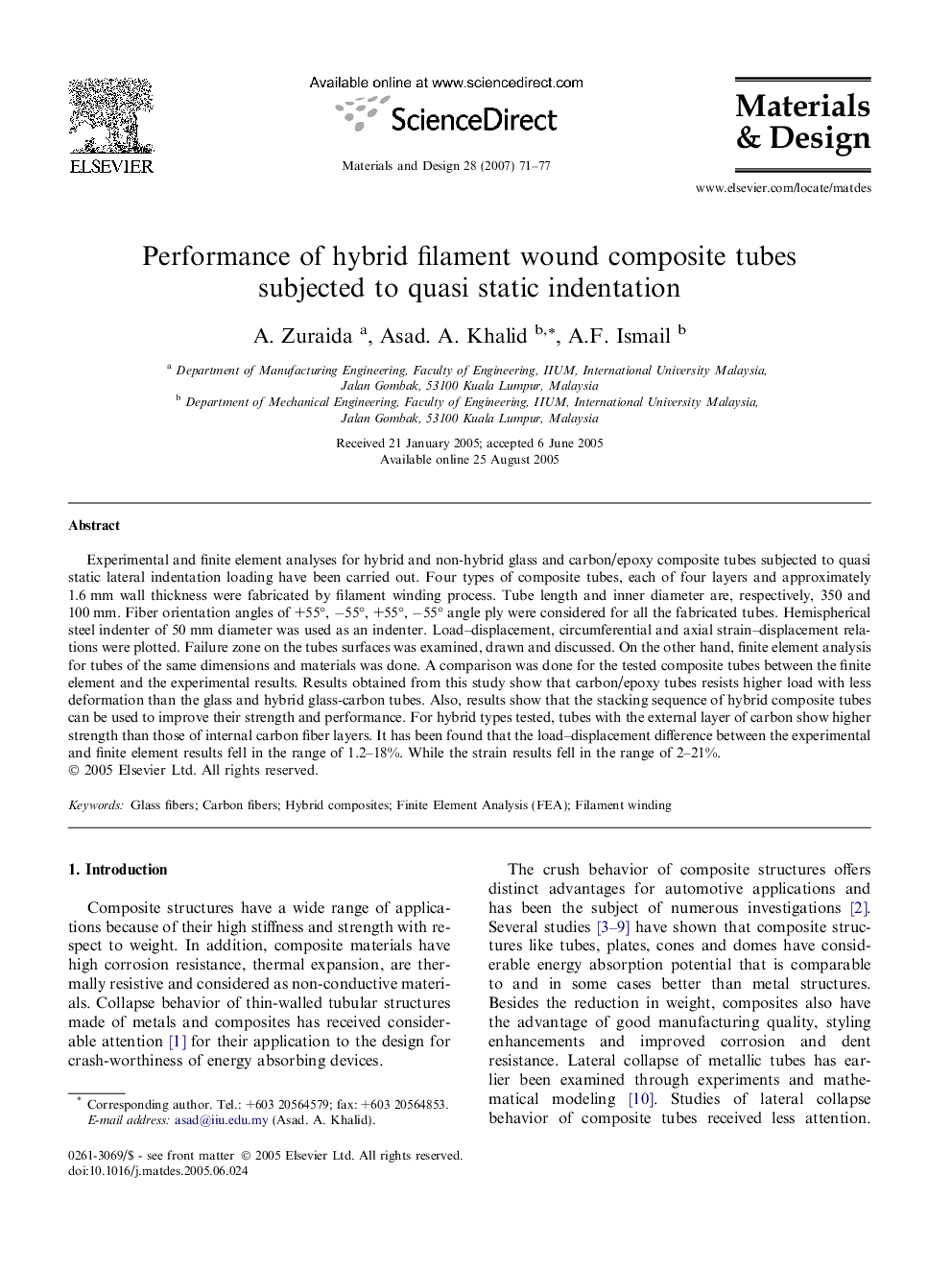| Article ID | Journal | Published Year | Pages | File Type |
|---|---|---|---|---|
| 833657 | Materials & Design (1980-2015) | 2007 | 7 Pages |
Experimental and finite element analyses for hybrid and non-hybrid glass and carbon/epoxy composite tubes subjected to quasi static lateral indentation loading have been carried out. Four types of composite tubes, each of four layers and approximately 1.6 mm wall thickness were fabricated by filament winding process. Tube length and inner diameter are, respectively, 350 and 100 mm. Fiber orientation angles of +55°, −55°, +55°, −55° angle ply were considered for all the fabricated tubes. Hemispherical steel indenter of 50 mm diameter was used as an indenter. Load–displacement, circumferential and axial strain–displacement relations were plotted. Failure zone on the tubes surfaces was examined, drawn and discussed. On the other hand, finite element analysis for tubes of the same dimensions and materials was done. A comparison was done for the tested composite tubes between the finite element and the experimental results. Results obtained from this study show that carbon/epoxy tubes resists higher load with less deformation than the glass and hybrid glass-carbon tubes. Also, results show that the stacking sequence of hybrid composite tubes can be used to improve their strength and performance. For hybrid types tested, tubes with the external layer of carbon show higher strength than those of internal carbon fiber layers. It has been found that the load–displacement difference between the experimental and finite element results fell in the range of 1.2–18%. While the strain results fell in the range of 2–21%.
